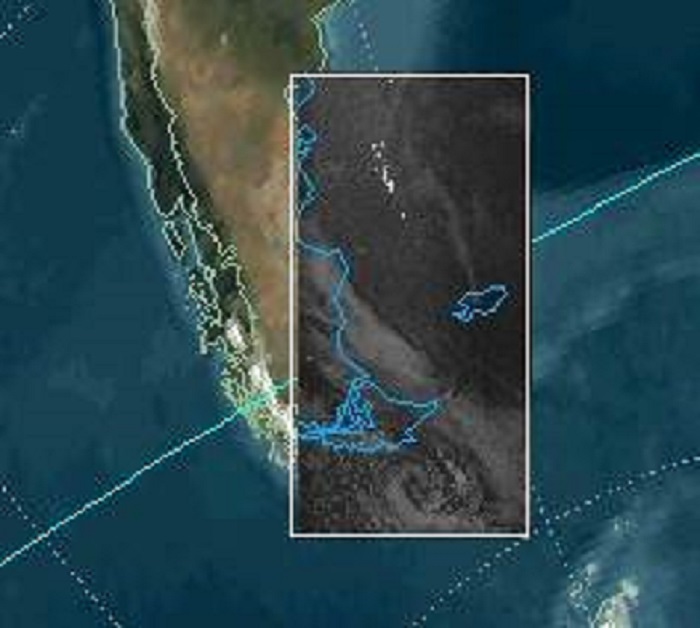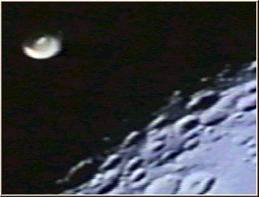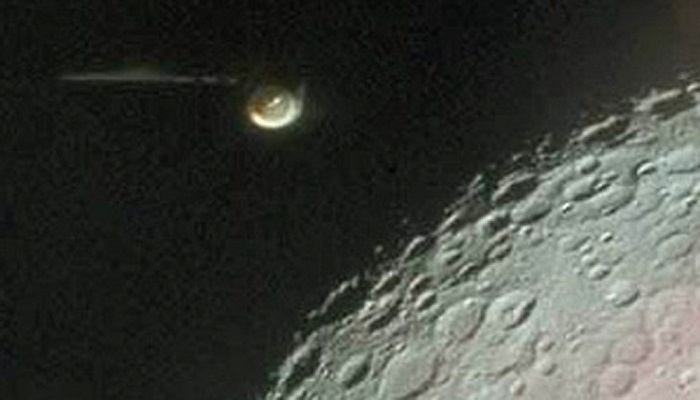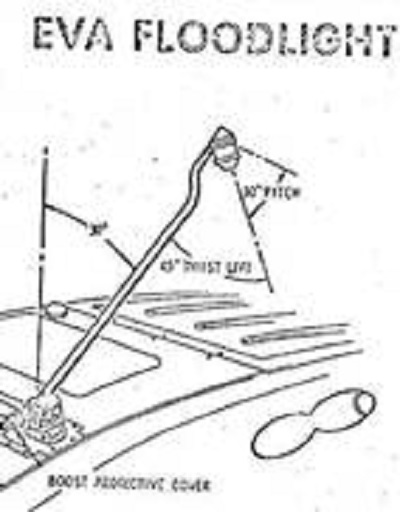.
How to crack strange space cases
Lone sleuth uses the internet and his wits to solve ufo mysteries
.
HOUSTON — When a space station astronaut made an offhand remark about an unusual formation of lights he saw passing in front of him during a spacewalk, the report had all the earmarks of an unsolvable space mystery. But it didn't take long to crack the case, thanks to the power of the Internet and one amateur space sleuth’s passion to find out.
It turned out that the case of the formation-flying lights was only the latest in a string of spooky space effects with perfectly natural explanations.
The investigation began when NASA astronaut Leroy Chiao told Aviation Week & Space Technology about "something interesting" he saw during a March 28 spacewalk with Russian crewmate Salizhan Sharipov.
“As the sun started rising after the first dark period, I looked out in the opposite direction of the sun and saw a line of five lights,” Chiao said. The lights seemed to be flying past fairly quickly "in an echelon formation, except that 'No. 2' was offset," he said.
Chiao admitted that he didn't know what the lights were, but he speculated that they might have been a constellation of satellites catching the sun's glint. Or perhaps they were "bright lights from oil platforms actually down on the Earth" that seemed to move due to the space station's own orbital speed.
Whatever they were, Chiao was delighted to have seen them. "It just shows you that after spending a lot of time in space and out on EVAs, there are still things that you can see that still surprise you," he mused.
Enter the investigator
One person who read the story was not surprised, since he had long been fascinated with unusual visual phenomena associated with space missions. James C. Smith, an aerospace engineer in Fairfax, Va., doesn't believe such phenomena are signs of alien visits. What he does believe — and what makes his work on this and other cases so impressive — is that such mysteries can often be solved, using resources available over the Internet. You just have to know where to look and what to do.
Smith knew that the place to go for images of bright lights on the night side of Earth was the home page of the Defense Meteorological Satellite Program, a military weather satellite network now closely integrated with the National Oceanographic and Atmospheric Administration.
After a day's worth of research, Smith came up with a solution to the mystery.
.

“A little research on the Internet shows that the area has a fleet of squid fishing boats which are the ones that use bright lights to attract the squid,” he reported by e-mail. "These unusually bright zones are the result of fleets of fishing vessels using powerful electrical lights at night to attract squid. The fleets regularly show up in images from weather satellites and from space stations."
Smith said Chiao was most likely looking at the fishing boats. “Since they are in the middle of a dark area of sea, and he was likely seeing them near the edge of his area of possible viewing, it may have been so dark opposite the sun that determining whether they were on the Earth surface or not may have been difficult,” Smith said.
“You can see that the lights are apparently brighter than any other lights around there,” he concluded. In photographs he obtained of the fleet that night, one light blob is indeed "off line" with a number of others. Viewed in the darkness below the onrushing space station, the lights would rapidly zoom off toward the horizon.
.
Decades' worth of anomalies
Reports of space anomalies are almost as old as the space program itself: For instance, John Glenn, the first American to orbit the Earth, reported seeing clouds of "fireflies" outside his window outside his window during the 1962 spaceflight — sparkles of light that were later attributed to ice particles coming off his Mercury capsule.
Smith himself recently came up with the solution to a three-decade-old mystery, involving a strange image from the Apollo 16 moon mission in 1972: The picture, widely distributed among UFO investigators, showed a disk-shaped structure that was seen in 16mm movie footage shot out the window as the Apollo spacecraft left the moon and headed back toward Earth.
None of Apollo 16's astronauts mentioned the disk at the time. Later, one NASA photo technician misidentified the disk as the crescent Earth (it was in the wrong part of the sky), and other space experts speculated that it might be a window reflection of the camera lens itself. But there was no truly satisfactory explanation, and UFO enthusiasts seized upon the picture as evidence that a flying saucer may have been monitoring the moon mission.
In 2003, the Journal of Scientific Exploration, a scholarly-sounding publication that focuses on “anomalies and topics outside mainstream science.” contained an article about the Apollo 16 disk by Japanese engineer Hiroshi Nakamura. “We believe that the object is a large extraterrestrial artifact. ... This is the only hypothesis that is consistent with the data," Nakamura wrote.
Another case cracked
Smith’s interest was piqued, and he began digging into the case. On Sept. 29, 2003, he posted his own findings.
“I ordered all possible 16mm film and reviewed them all to locate the above image and to see if any explanation (lens flare, reflection, etc.) could be the cause of the image,” he reported. He also searched all NASA online references about the Apollo missions and the Apollo spacecraft mechanical systems, seeking potential correlations between the image and candidate hardware.
.

This photo from the Apollo 16 moon mission seems to show a flying saucer. What does the image actually show?
.
“Of interest is the more or less horizontal line or bar sticking out part of the UFO,” Smith pointed out, noting a feature that was visible in the high-quality film he had received — a feature unnoticed by all previous analysts. He then pored over the web pages for any disk-shaped structures mounted on long booms — and found one
“The most likely cause of the UFO object is the EVA floodlight,” he said. The pole-mounted lamp was set up to illuminate shadowy areas on the Apollo spacecraft, during an unusual spacewalk aimed at retrieving film from a mapping camera. The spacewalk occurred a day after the picture was taken.
.

A sharper image of the Apollo 16 "flying saucer," produced from the original flight film, reveals a pole sticking out from the disk — which is actually a floodlight that was set up for a spacewalk.
.
NASA weighs in
Meanwhile, a parallel line of inquiry was being set in motion by Donald Ratsch, a Maryland truck driver and UFO enthusiast. Ratsch was apparently unaware of Smith's conclusions, and on Oct. 27, 2003, he sent a letter to his congressman asking that NASA be required to explain the images.
About six months later, he received his reply: NASA had looked at the original flight film, and concluded that the image showed ... the EVA floodlight.

Gregory Byrne, a NASA imaging expert at Johnson Space Center in Houston, explained to MSNBC.com that the review was conducted “only because it was requested of us by NASA HQ in response to a congressional inquiry.”
“I had no choice in the matter,” Byrne said, “and reluctantly had to pull image analysis resources away from shuttle return-to-flight to work Apollo 16. It actually turned out to be an interesting diversion from the tedium, and almost like stepping back in time.”
Quelle: NBC / J.Oberg
